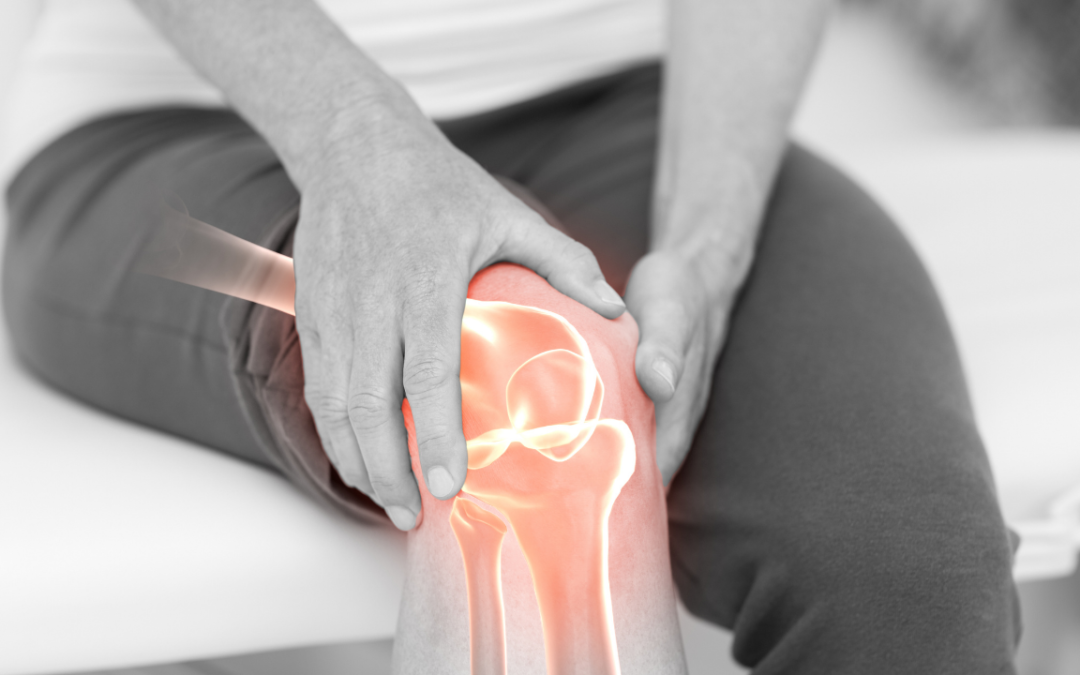Novel blood test could predict knee osteoarthritis years before symptoms appear
Groundbreaking blood test has the potential to detect signs of knee osteoarthritis up to eight years before the disease is visible on x-rays

A groundbreaking blood test has the potential to detect signs of knee osteoarthritis up to eight years before the disease is visible on X-rays, according to a recent study. This early detection could revolutionize the management and treatment of the disease, which currently affects approximately 35 million adults in the United States.
The study, conducted by researchers from Duke University School of Medicine and published in Science Advances, analyzed blood samples from 200 white British women.
Half of these participants were already diagnosed with knee osteoarthritis, while the other half showed no signs of the disease. The researchers identified a set of biomarkers that were significantly different in the blood of those with osteoarthritis compared to those without.
Dr. Virginia Byers Kraus, the senior study author and a professor at Duke University, highlighted the significance of their findings. "We found we were able to identify people who are at risk for knee osteoarthritis, but what was exciting was that we were able to identify it eight years before they had any X-ray changes," she explained. The ability to predict the progression of knee arthritis with 74% accuracy and diagnose it with 85% accuracy using these biomarkers is a major advance in the field.
Knee osteoarthritis is a debilitating condition that can severely impact the quality of life due to pain and mobility issues. The disease often leads to the need for joint replacement surgery, which not only adds a significant economic burden but also affects the patient's health outcomes.
Stephen Messier, a professor of health and exercise science at Wake Forest University and an Arthritis Foundation-funded investigator, stressed the growing impact of osteoarthritis.
Related News
"The burden of osteoarthritis continues to rise, driving higher healthcare costs and poorer patient outcomes," he said. "Early detection of knee OA could help clinicians intervene sooner and reduce the pain and loss of function of patients before joint replacement surgery is necessitated."
The comparison of osteoarthritis to other chronic conditions like heart disease and Alzheimer’s is apt, as these diseases are also often diagnosed in their advanced stages.
By detecting osteoarthritis early, healthcare providers can potentially prevent the disease from becoming debilitating. "The reason that this is really important is that until now, we have been thinking about osteoarthritis as a disease with X-ray changes," Kraus noted. "But it turns out that, in fact, there are a lot of things going on prior to that and by actually identifying it much earlier, we can prevent disability, pain and the deterioration of quality of life that people who develop the X-ray changes usually get."


(LEFT) Steve Messier, Professor, Director of the J.B. Snow Biomechanics Laboratory. (RIGHT) Dr. Virginia Byers Kraus, the senior study author and a professor at Duke University. (CREDIT: Duke University)
The implications of early detection are profound. Patients at high risk for knee osteoarthritis could make preventative lifestyle changes, such as weight loss, exercise, and healthy eating, or even consider medical interventions like steroid injections. These proactive steps could significantly delay or even prevent the onset of severe symptoms.
Despite these promising results, more research is needed to validate the blood test before it can be widely implemented. The current study was limited to white women, and future studies will need to include a more diverse group of participants to ensure the test's applicability across different demographics. Moreover, there are about 100 different types of arthritis, including rheumatoid arthritis and gout, which also need to be studied in similar contexts.
The research team plans to extend their investigation to other joints, such as the hips, hands, and spine, to explore whether similar biomarkers can be detected and whether early intervention could be beneficial for these types of arthritis as well.
Dr. Kraus also emphasized that osteoarthritis should not be seen solely as a disease of older adults. "I think that one of the take-home messages is that osteoarthritis is not just the disease of older people, it's the disease of younger people as well, especially if they've had a major joint injury," she said. This underscores the importance of comprehensive joint health management across all ages.
The development of a blood test for early detection of knee osteoarthritis represents a significant leap forward in managing a prevalent and painful condition. It holds the promise of transforming the approach to treatment and care, enabling interventions that could greatly enhance patient outcomes and reduce healthcare costs long before irreversible damage occurs.
This study not only sheds light on the potential for early diagnosis but also calls for continued research to broaden the test's applicability and effectiveness.
Symptoms of Osteoarthritis
According to the Mayo Clinic, osteoarthritis symptoms often develop slowly and worsen over time. Signs and symptoms of osteoarthritis include:
Pain. Affected joints might hurt during or after movement.
Stiffness. Joint stiffness might be most noticeable upon awakening or after being inactive.
Tenderness. Your joint might feel tender when you apply light pressure to or near it.
Loss of flexibility. You might not be able to move your joint through its full range of motion.
Grating sensation. You might feel a grating sensation when you use the joint, and you might hear popping or crackling.
Bone spurs. These extra bits of bone, which feel like hard lumps, can form around the affected joint.
Swelling. This might be caused by soft tissue inflammation around the joint.
Factors that can increase your risk of osteoarthritis include:
Older age. The risk of osteoarthritis increases with age.
Sex. Women are more likely to develop osteoarthritis, though it isn't clear why.
Obesity. Carrying extra body weight contributes to osteoarthritis in several ways, and the more you weigh, the greater your risk. Increased weight adds stress to weight-bearing joints, such as your hips and knees. Also, fat tissue produces proteins that can cause harmful inflammation in and around your joints.
Joint injuries. Injuries, such as those that occur when playing sports or from an accident, can increase the risk of osteoarthritis. Even injuries that occurred many years ago and seemingly healed can increase your risk of osteoarthritis.
Repeated stress on the joint. If your job or a sport you play places repetitive stress on a joint, that joint might eventually develop osteoarthritis.
Genetics. Some people inherit a tendency to develop osteoarthritis.
Bone deformities. Some people are born with malformed joints or defective cartilage.
Certain metabolic diseases. These include diabetes and a condition in which your body has too much iron (hemochromatosis).
Symptoms and risk factors can vary in severity and may overlap with other conditions, so it's important to consult a healthcare professional for proper diagnosis and treatment.
For more science and technology stories check out our New Discoveries section at The Brighter Side of News.
Note: Materials provided above by The Brighter Side of News. Content may be edited for style and length.
Like these kind of feel good stories? Get the Brighter Side of News' newsletter.



